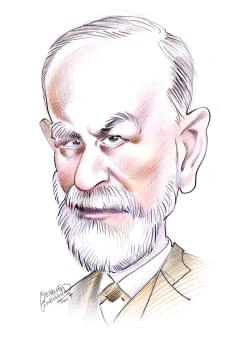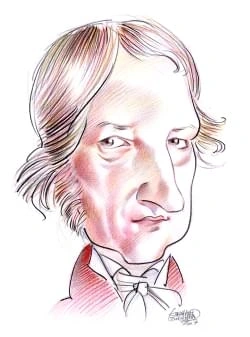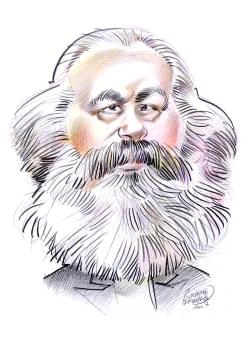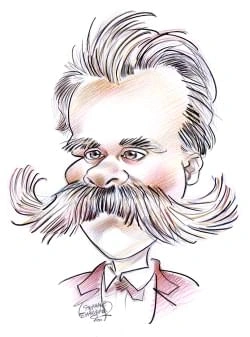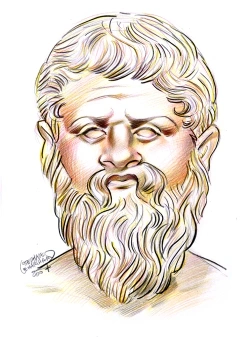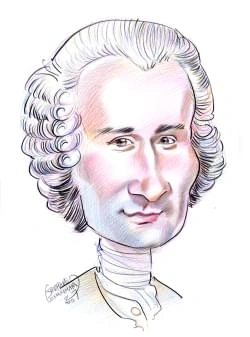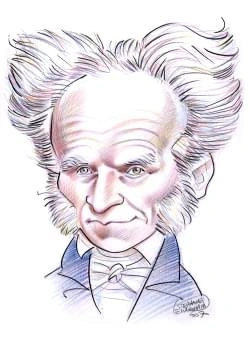1526 résultats pour "dominant"
-
Cambodia - country.
The population of Cambodia is 14,241,640 (2008 estimate). Population growth per year is estimated at 1.8 percent, one of the highest rates in Asia. The rate of infantmortality is also high. The population density is 81 persons per sq km (209 per sq mi), with the densest concentrations on the heavily cultivated central plain. Themountainous regions of the country, where malaria is widespread, are thinly populated, as are the poorly watered northern provinces. During the late 1970s, under thebruta...
-
Lyndon B.
A1 First Years in Office Johnson quickly made a two-fold reputation. He was a firm supporter of Roosevelt’s program, both domestic and foreign, and he was also a tireless worker on behalf ofthe voters he represented. Often the two activities coincided, as was the case when he helped to bring public power into Texas through the Rural ElectrificationAdministration and the Lower Colorado River Authority. He also secured funds for the building of dams, roads, and other public improvements in his di...
-
El Salvador - country.
III PEOPLE The Spanish subjugated the native population of El Salvador in the 16th century. Few Spanish women came to the country, however, so many Spanish men took NativeAmerican women as their mates. Today nearly 90 percent of the population is mestizo , of mixed European and Native American descent. People of purely Native American descent represent about 5 to 10 percent of the population, while people of European descent represent only about 1 percent. El Salvador’s population, 5.2 millio...
-
Newfoundland and Labrador - Geography.
Precipitation averages about 1,120 mm (about 44 in) yearly in Newfoundland. In Labrador precipitation varies from about 1,020 mm (about 40 in) in the southeast toabout 510 mm (about 20 in) in the extreme north. Heavy winter snowfalls are common, especially in Newfoundland. D Plant Life About one-third of Newfoundland is forested, and most of the rest of the island is made up of barren areas of reindeer moss and lichens. The forests consist almostentirely of conifers. The most important species...
-
Newfoundland and Labrador - Canadian History.
Precipitation averages about 1,120 mm (about 44 in) yearly in Newfoundland. In Labrador precipitation varies from about 1,020 mm (about 40 in) in the southeast toabout 510 mm (about 20 in) in the extreme north. Heavy winter snowfalls are common, especially in Newfoundland. D Plant Life About one-third of Newfoundland is forested, and most of the rest of the island is made up of barren areas of reindeer moss and lichens. The forests consist almostentirely of conifers. The most important species...
- UNIVERSITE MONTESQUIEU - BORDEAUX IV ECOLE DOCTORALE DE DROIT (E.
- Pierre et Jean
-
North Dakota - geography.
Bismarck, the growing season averages 134 days, as the average date of the last killing frost is May 11 and that of the first killing frost is September 22. The length ofthe growing season drops to about 110 days in the northerly reaches of the state. The long periods of summer sunshine at this latitude, providing as much as 16 hoursof daylight in summer, help crops to mature quickly, thus compensating somewhat for the relatively short growing season. Temperatures in the north are, on the averag...
-
-
North Dakota - USA History.
Bismarck, the growing season averages 134 days, as the average date of the last killing frost is May 11 and that of the first killing frost is September 22. The length ofthe growing season drops to about 110 days in the northerly reaches of the state. The long periods of summer sunshine at this latitude, providing as much as 16 hoursof daylight in summer, help crops to mature quickly, thus compensating somewhat for the relatively short growing season. Temperatures in the north are, on the averag...
- 861 SUJETS-TEXTES DE L’ÉPREUVE DE PHILOSOPHIE AU BACCALAURÉAT
-
American Revolution.
C1 The South Southern agriculture was founded on the cultivation of tobacco, wheat, and corn in Virginia, Maryland, and North Carolina, and of rice and indigo (a blue dye) in SouthCarolina and Georgia. There was a large demand for these crops in Europe. These crops were cultivated with the help of black slaves imported from Africa. The whiteplanter class in the South was the most powerful, both politically and economically. C2 The North Wheat was the main cash crop of the mid-Atlantic colonies...
-
American Revolution - U.
C1 The South Southern agriculture was founded on the cultivation of tobacco, wheat, and corn in Virginia, Maryland, and North Carolina, and of rice and indigo (a blue dye) in SouthCarolina and Georgia. There was a large demand for these crops in Europe. These crops were cultivated with the help of black slaves imported from Africa. The whiteplanter class in the South was the most powerful, both politically and economically. C2 The North Wheat was the main cash crop of the mid-Atlantic colonies...
-
Greek Art and Architecture - USA History.
The struggle between these two city-states and their allies ultimately led to the Peloponnesian War (431-404 BC), which Sparta won. Despite this conflict, the 5th century, often called the Classical period, is usually considered the culmination of Greek art, architecture, and drama, with its highest achievements being the Temple ofZeus at Olympia, the Parthenon in Athens, and the plays of Athenian dramatists Aeschylus, Sophocles, Euripides, and Aristophanes. The 4th century, or Late Classical p...
-
Physics
I
INTRODUCTION
Physics, major science, dealing with the fundamental constituents of the universe, the forces they exert on one another, and the results produced by these forces.
Starting about 1665, at the age of 23, Newton enunciated the principles of mechanics, formulated the law of universal gravitation, separated white light into colors,proposed a theory for the propagation of light, and invented differential and integral calculus. Newton's contributions covered an enormous range of naturalphenomena: He was thus able to show that not only Kepler's laws of planetary motion but also Galileo's discoveries of falling bodies follow a combination of his ownsecond law of m...
-
Communism.
In Britain, Robert Owen, a philanthropic Welsh manufacturer, strove against the social problems brought about by the Industrial Revolution and sought to improve thewelfare of workers. As manager of a cotton mill, he enhanced the environment of his workers by improving their housing, modernizing mill equipment for greater safetyand sanitation, and establishing low-priced stores for the workers and schools for their children. Owen believed that workers, rather than governments, should createthe in...
-
Communism .
In Britain, Robert Owen, a philanthropic Welsh manufacturer, strove against the social problems brought about by the Industrial Revolution and sought to improve thewelfare of workers. As manager of a cotton mill, he enhanced the environment of his workers by improving their housing, modernizing mill equipment for greater safetyand sanitation, and establishing low-priced stores for the workers and schools for their children. Owen believed that workers, rather than governments, should createthe in...
-
-
Canada.
Six general landform regions are distinguishable in Canada: the Appalachian Region, the Great Lakes and St. Lawrence Lowlands, the Canadian Shield, the Great Plains,the Canadian Cordillera, and the Canadian Arctic Archipelago. B1 Appalachian Region and Great Lakes and St. Lawrence Lowlands Eastern Canada consists of the Appalachian Region and the Great Lakes and St. Lawrence Lowlands. The Appalachian Region embraces Newfoundland Island, NovaScotia, New Brunswick, Prince Edward Island, and the G...
-
Canada - country.
Six general landform regions are distinguishable in Canada: the Appalachian Region, the Great Lakes and St. Lawrence Lowlands, the Canadian Shield, the Great Plains,the Canadian Cordillera, and the Canadian Arctic Archipelago. B1 Appalachian Region and Great Lakes and St. Lawrence Lowlands Eastern Canada consists of the Appalachian Region and the Great Lakes and St. Lawrence Lowlands. The Appalachian Region embraces Newfoundland Island, NovaScotia, New Brunswick, Prince Edward Island, and the G...
-
Canada - Canadian History.
Six general landform regions are distinguishable in Canada: the Appalachian Region, the Great Lakes and St. Lawrence Lowlands, the Canadian Shield, the Great Plains,the Canadian Cordillera, and the Canadian Arctic Archipelago. B1 Appalachian Region and Great Lakes and St. Lawrence Lowlands Eastern Canada consists of the Appalachian Region and the Great Lakes and St. Lawrence Lowlands. The Appalachian Region embraces Newfoundland Island, NovaScotia, New Brunswick, Prince Edward Island, and the G...
- La royauté homérique
-
United Kingdom - country.
B Natural Regions and Topography The island of Great Britain can be divided into two major natural regions—the highland zone and the lowland zone. The highland zone is an area of high hills andmountains in the north and west. The lowland zone in the south and east consists mostly of rolling plains. The zones are divided by an imaginary line running throughEngland from the River Exe on the southwest coast to the mouth of the River Tees on the northeast coast. The lowland zone has a milder climat...
-
Les Nouvelles Technologies: risques et fécondités
notre temps ? Comment faire le tri, comment discerner, comment donc prendre du recul ? Comment être sûr qu'elles, elles ne mentent pas? Il convient sans doute de commencer par se rappeler ce qui fait la spécificité de l'Homme dans son univers et ainsi on comprendra sous quel prisme ont doit envisager les Nouvelles Technologies. Etre vivant, l'homme est matière et esprit, producteur tant de matériel que d'immatériel, individu mais chaînon d'une soc...
- Les grands courants de la pensée économique
- la sociologie de pièrre bourdieu
-
-
France - country.
In both the Paris and Aquitaine basins, fertile soils derived from limestone and wind-deposited dust, called loess, have supported prosperous agriculture since ancienttimes. Other lowlands in France are scattered and relatively small. They include the Alsace Plain in the east, bordering Germany, the valley of the Rhône River in thesoutheast, and the Languedoc Plain along the Mediterranean coast. A2 Uplands France contains several regions of uplands, the worn down remains of ancient mountain sys...
-
Japan - country.
island’s fertile soils support agriculture and provide the vast majority of Japan’s pasturelands. In addition, Hokkaidō contains coal deposits, and the cold currents off itsshores supply cold-water fish. Winters are long and harsh, so most of Hokkaid ō is lightly settled, housing about 5 percent of Japan’s population on approximately 20 percent of its land area. However,its snowy winters and unspoiled natural beauty attract many skiers and tourists. Hokkaid ō is thought of as Japan’s northern fr...
}})
